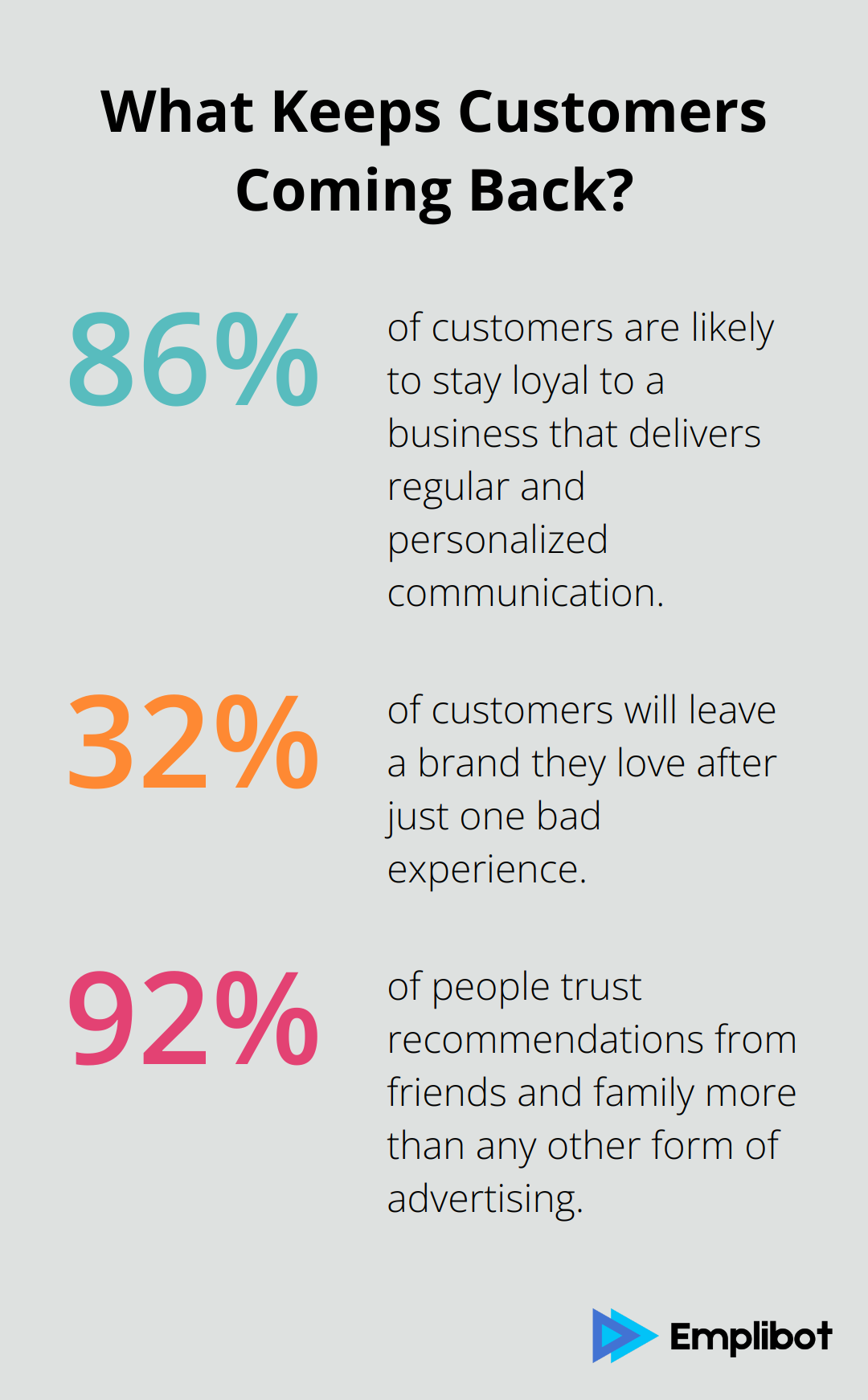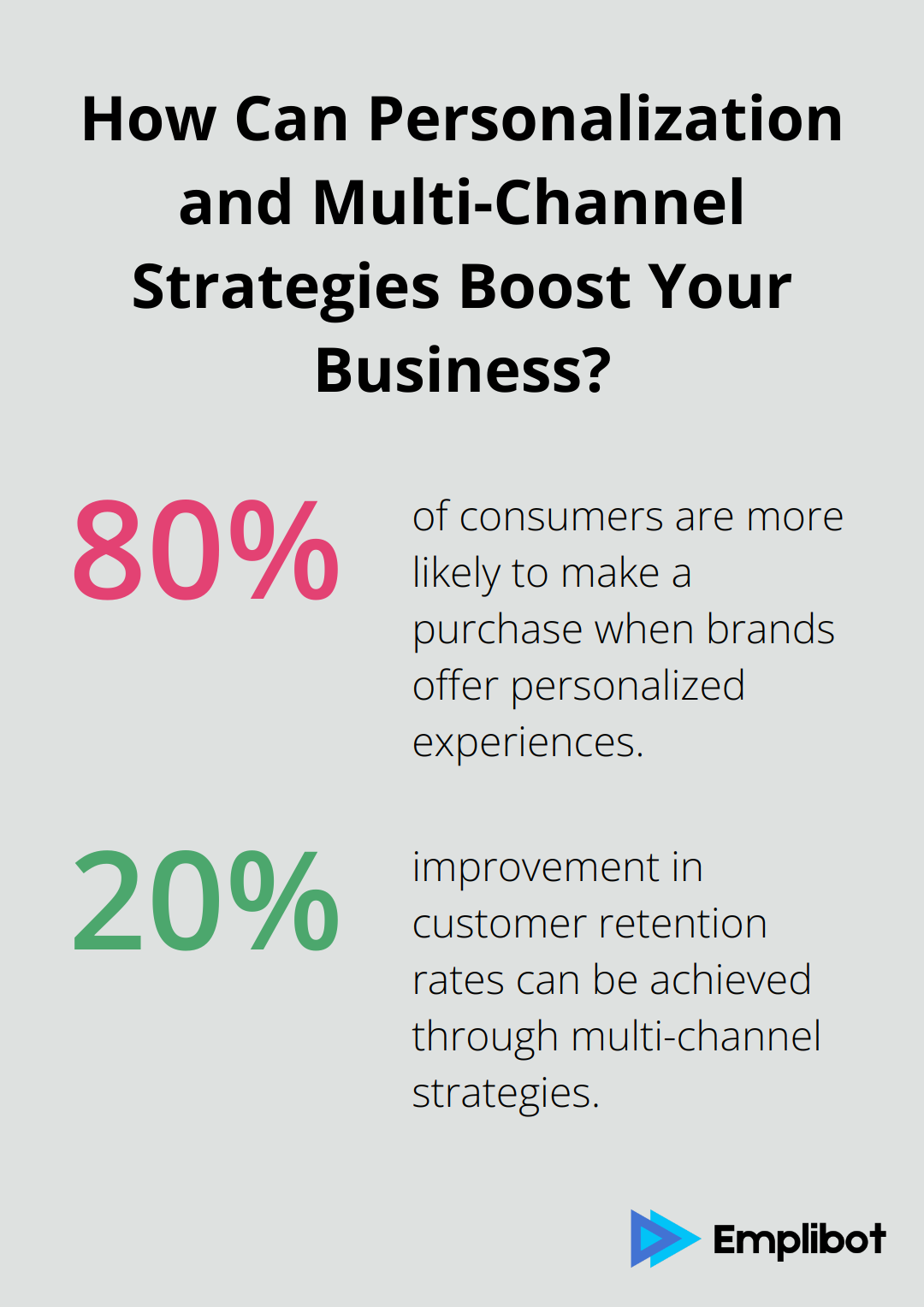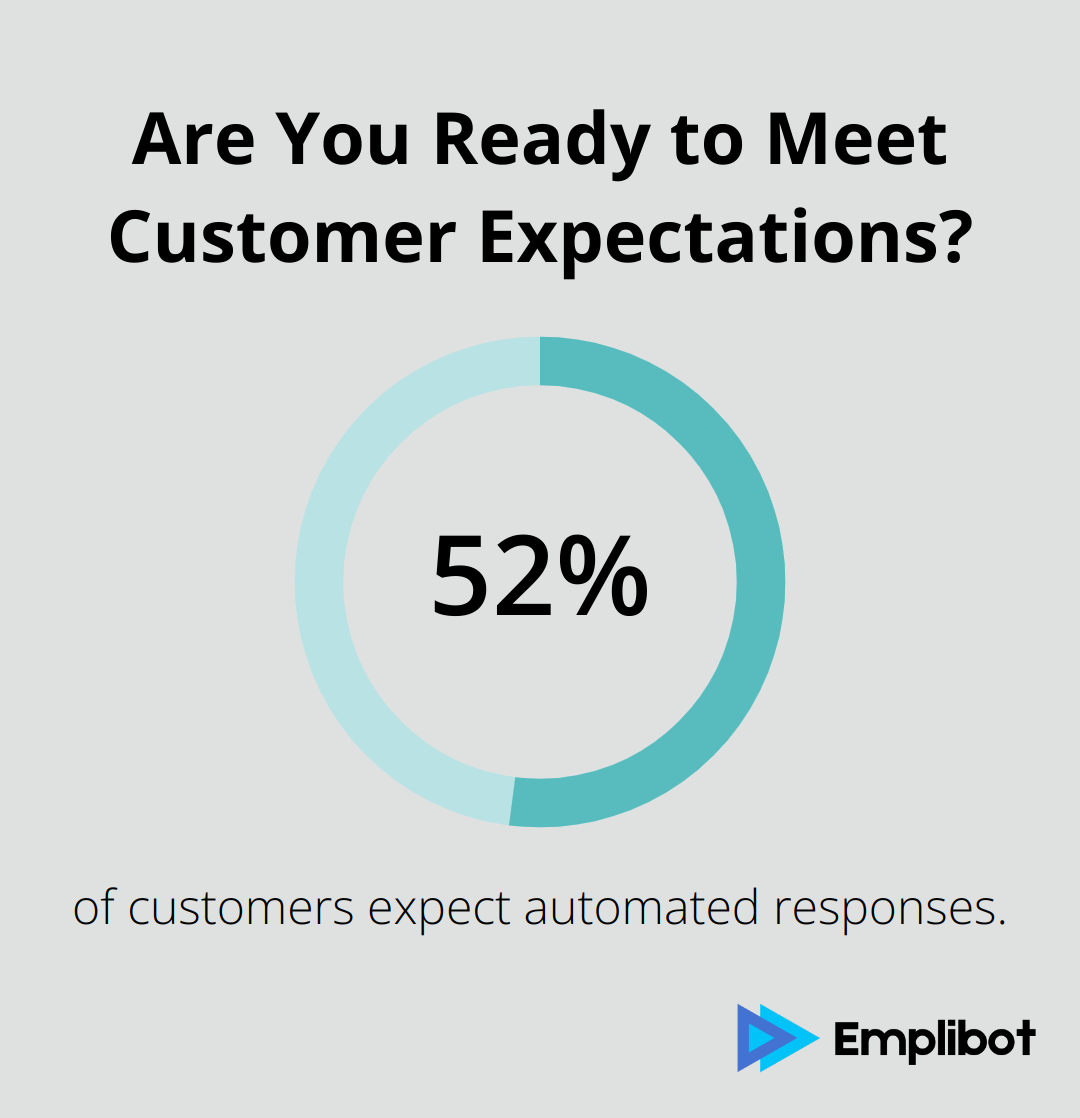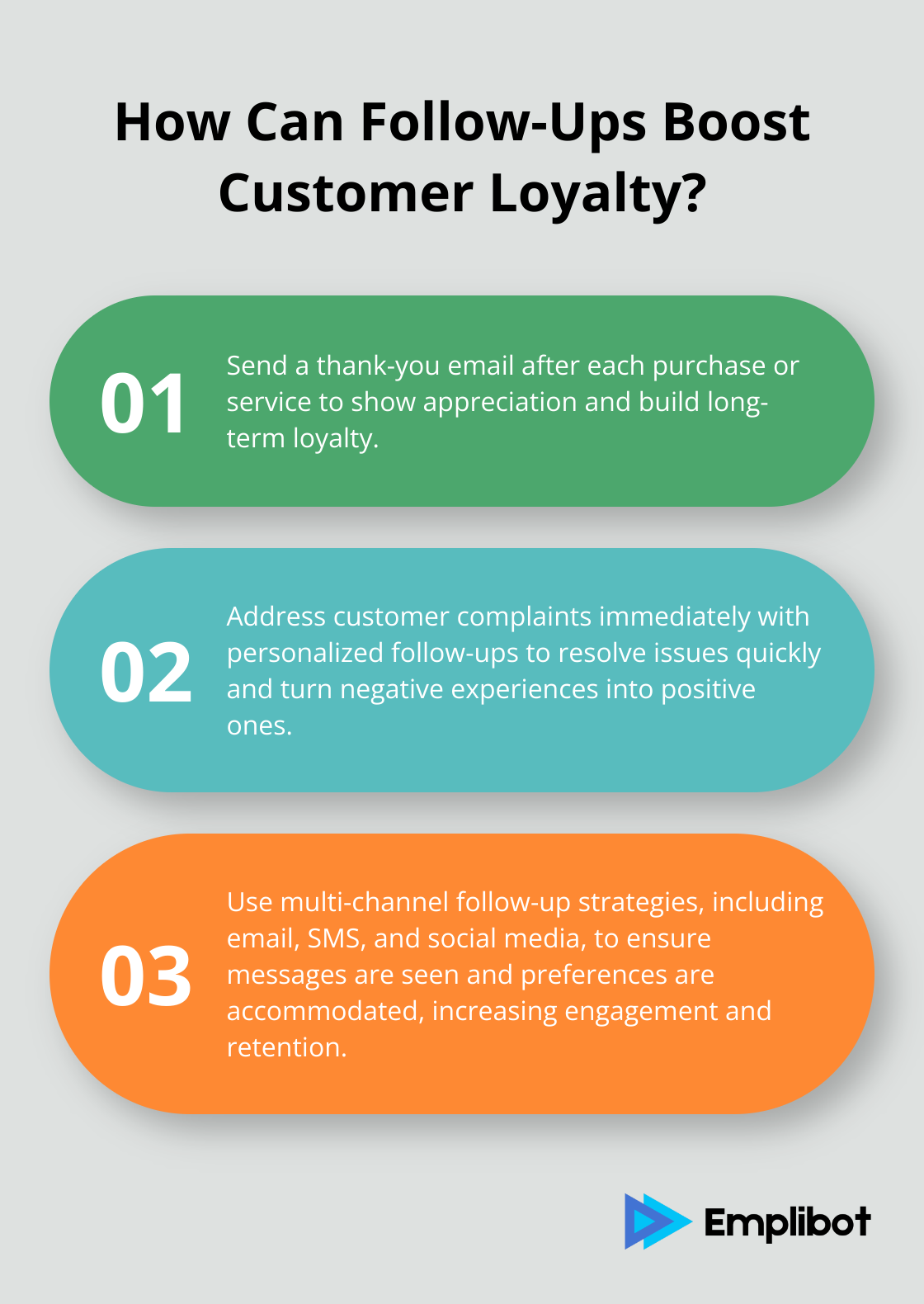Customer follow-up is a game-changer in building lasting relationships and driving business success.
At Emplibot, we believe it’s critical for increasing customer loyalty, enhancing their experience, and generating positive word of mouth.
In this blog post, we’ll explore effective strategies for follow-up and metrics to gauge their success.
Inhalt
ToggleDoes Following-Up Boost Customer Satisfaction?
Increase in Customer Loyalty
Follow-up interactions are crucial for fostering loyalty. Consistent engagement after a purchase or service shows customers they are valued. Studies reveal that 86% of customers are likely to stay loyal to a business that delivers regular and personalized communication. For instance, sending a thank-you email after a purchase or checking in with a customer post-service can significantly bolster their trust and commitment to your brand. Using tools like automated email services can help maintain this consistency without overwhelming your team.
Enhanced Customer Experience
An exceptional customer experience is rooted in proactive follow-ups. Imagine a customer reaching out with a complaint. An immediate follow-up not only resolves their issue quickly but also shows empathy, turning a potentially negative experience around. According to a report by PwC, 32% of customers will leave a brand they love after just one bad experience. Effective follow-ups can reduce this risk by addressing concerns promptly and personally. Personalized follow-ups can be streamlined through customer survey automation, allowing businesses to gauge customer satisfaction and areas for improvement.
Positive Word of Mouth
Satisfied customers are your best advocates, and regular follow-ups can transform them into promoters. Data from Nielsen indicates that 92% of people trust recommendations from friends and family more than any other form of advertising. Follow-ups can prompt positive reviews and referrals. For instance, after resolving a customer’s issue or simply thanking them for their business, kindly ask them to share their experience on social media or review platforms. This strategy not only boosts your brand’s reputation but also attracts new customers through genuine endorsements. Automated follow-up tools can help schedule these requests at optimal times without seeming intrusive.

Regular follow-ups are more than just good practice; they are a powerful tool to enhance satisfaction, build loyalty, and generate positive word of mouth.
What Are Effective Strategies for Customer Follow-Up?
Timely Communication
Timing is essential when following up with customers. Businesses that reach out soon after an interaction are more likely to make a positive impression. Research by Harvard Business Review shows that companies that follow up within an hour are nearly seven times more likely to qualify a lead compared to those who wait longer. Immediate follow-ups, whether after a purchase or a customer query, show attentiveness and respect for the customer’s time.
Personalized Messages
Generic messages do not engage customers. Personalization can significantly enhance the impact of follow-ups. According to Epsilon, 80% of consumers are more likely to make a purchase when brands offer personalized experiences. Using the customer’s name, referencing their specific purchase, or addressing their unique concerns can make them feel valued. Automated tools like AI-driven email systems can help tailor each follow-up to fit the customer’s needs, ensuring every communication feels personal and relevant.
Utilizing Multiple Channels
Relying solely on one channel for communication limits reach and effectiveness. Customers have diverse preferences; some may prefer emails, while others might respond better to text messages or even social media interactions. Gartner reports that multi-channel strategies can improve customer retention rates by up to 20%. Incorporating various platforms ensures that messages are seen and acknowledged. For instance, an email follow-up can be complemented with a friendly reminder via SMS or a direct message on social media. This approach broadens engagement opportunities and accommodates different customer preferences.

By integrating these strategies, businesses can significantly enhance their follow-up processes, foster stronger relationships, and drive client satisfaction. For more insights on optimizing your approach, check out our guide on email marketing automation strategies.
How to Measure Follow-Up Success
Customer Feedback and Surveys
Customer feedback is a goldmine for gauging the effectiveness of follow-up strategies. Implementing automated surveys post-interaction can provide invaluable insights. According to HubSpot, 52% of customers expect automated responses. Tools like automated customer surveys help collect opinions quickly and effortlessly. Sifting through this feedback can highlight areas of improvement and validate what’s working well. For robust data, ensure surveys are brief, focused, and include a mix of quantitative and qualitative questions.
Retention Rates
Keeping customers coming back is a clear indicator of successful follow-up efforts. Companies that engage customers consistently see a 5-20% increase in profitability, reports Bain & Company. Retention metrics like repeat purchase rates and churn rates offer concrete evidence of the impact of follow-ups. If your business sees a significant drop in churn and a rise in repeat sales post-follow-up campaigns, it’s working. Simply put, effective follow-ups correlate directly to better retention.
Sales and Revenue Growth
Sales and revenue growth offer a definitive measure of follow-up success. Data from InsideSales.com shows that 35-50% of sales go to the vendor who responds first. Timely and well-crafted follow-ups can significantly boost conversion rates. Monitoring metrics such as the number of deals closed post-follow-up, increased average order value, and growing customer lifetime value can provide clear evidence of follow-up impact. For practical guidance on leveraging automation to drive growth, explore our post on upselling techniques.

In summary, consistent monitoring and analyzing feedback, retention, and revenue growth offer a holistic view of follow-up efficacy. Regular assessment and adjustment of follow-up tactics ensure they align with your business goals and customer expectations.
Wrapping Up
Customer follow-up is more than just good practice; it’s a necessity for cultivating loyalty, enhancing customer experience, and driving positive word-of-mouth. Regular follow-ups demonstrate that you value your customers, which significantly contributes to a rise in loyalty and satisfaction. Implementing timely communication, personalized messages, and utilizing multiple channels can transform occasional buyers into long-term advocates.

The importance of consistent follow-ups cannot be overstated. Effective follow-ups build trust and maintain engagement, making customers more likely to return. Studies have shown that businesses engaging in regular follow-ups experience higher retention rates and sales growth. Companies that master this aspect often see increased profitability and stronger customer relationships.
We encourage businesses to implement strategic follow-up approaches for sustained success. Investing in tools that aid in automated, personalized follow-ups can streamline this process, ensuring no customer is overlooked. For those looking to optimize their follow-up strategies with ease, Emplibot offers automated solutions to maintain seamless and effective communication.
For additional insights on achieving follow-up success, you can explore related strategies on email marketing automation and automated customer surveys. Regularly assessing and refining your follow-up techniques will help your business meet and exceed customer expectations.











